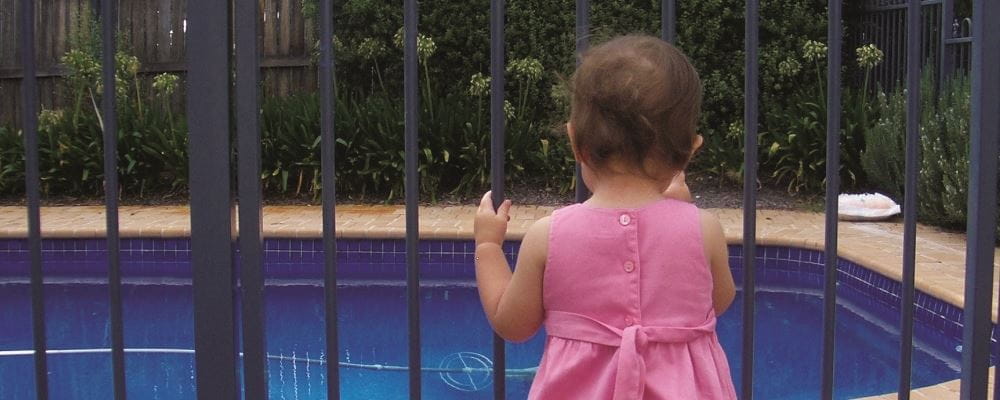
Last financial year, Royal Life Saving WA conducted more than 9,000 home pool barrier inspections as part of our contract with several Local Government Areas across metro and regional WA.
During these inspections our staff witnessed a range of barrier compliance issues, with home pool owners often not fully aware of all the regulations relating to their pool.
What are the common faults with pool/spa barrier compliance in WA?
1. Gates
A pool gate must self-close and self-latch, without any application of force from any position, including when it is resting on the latch. In many cases when a pool barrier fails inspection, the gate is found to be faulty.
It’s also vitally important that pool owners never prop a pool gate open. During the 2021-22 financial year in WA, pool gates that were propped open or not correctly closed or latched accounted for almost 58% of backyard pool drownings in children under the age of five.
BE SAFE: never leave a pool gate propped open for any reason.
2. Climbable objects and structures
Permanent or movable structures with a horizontal surface exceeding 10mm in depth are considered climbable. Pot plants, alfresco kitchens and vegetation to name a few, that are located next to a swimming pool or spa barrier reduce the effective heights required for a compliant barrier.
All 1.2m isolation fences need to be kept clear of all climbable objects – this area is known as the non-climbable zone. The required clearance is 1.2 metres in a downward arc from the top of the isolation barrier.
BE SAFE: do not build, place, plant or store anything next your swimming pool/spa barrier.
3. Windows
Windows that open into the pool area need to be restricted to opening not more than 100mm (10cm). What many owners don't realise is that key locking devices are not acceptable.
Windows must be permanently sealed with fasteners that can only be removed with the use of a tool such as a screwdriver or allen key. Examples are wire 'crim safe' security screens or a device placed on the window frame.
BE SAFE: secure all windows that open into the pool area.
4. Below-barrier ground clearance
The gap between the bottom of the fence and the ground should not be greater than 100mm (10cm). The ground should be stable and not susceptible to erosion due to weather, children or animals digging in the area.
BE SAFE: secure the ground under your barrier to prevent access into the pool area.
If you’re unsure whether your pool barrier complies with all relevant WA legislation, please download our complete pool compliance checklist below.
